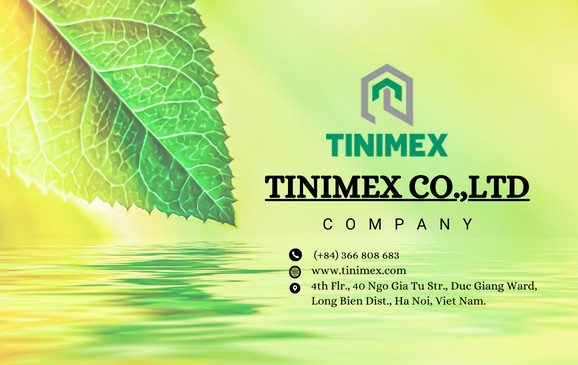Star Anise Crash & Climb: 2025 Great Market Outlook
Introduction: A Market in Motion
Star anise, long revered for its culinary and medicinal uses, is not just a staple spice but also a strategic commodity in the global market. As the key natural source of shikimic acid—an essential precursor in the production of antiviral medications like Tamiflu—star anise plays a critical role in both food and pharmaceutical industries. Over the past year, the market for star anise has experienced a volatile trajectory, with steep declines followed by strong rebounds. This report dives deep into the crash and subsequent climb of the star anise market, offering detailed insights into pricing trends, production dynamics, export patterns, and future forecasts for 2025 and beyond.

1. 2024 Market Crash: Factors Behind the Decline
- Oversupply and Stockpiling: A bumper harvest in late 2023 led to an oversupply of raw star anise. Traders and manufacturers overestimated demand, resulting in excessive inventories.
- Reduced Pharmaceutical Demand: A decrease in flu cases post-pandemic and lower-than-expected global demand for antiviral drugs led to reduced bulk purchases from pharmaceutical companies.
- Trade Barriers and Logistics: Tighter customs controls, freight delays, and increased shipping costs disrupted the timely flow of star anise from Vietnam and China to key markets in Europe and North America.
- Quality Control Issues: Several batches of contaminated or misidentified products (especially involving toxic Japanese star anise) resulted in temporary bans and recalls in Western markets.
The combined effect of these factors led to a 35% drop in international star anise prices between January and June 2024, severely impacting producers and exporters.
2. The Rebound: Drivers of the Climb
- Renewed Pharmaceutical Interest: With growing concerns about new flu variants and increased investment in pandemic preparedness, pharmaceutical companies resumed large-scale purchases of shikimic acid.
- Government Stimulus and Trade Agreements: China and Vietnam, two of the largest exporters, introduced incentives for agricultural exports, including tax breaks and streamlined export processes. Bilateral trade agreements further opened access to European and ASEAN markets.
- Consumer Shift Toward Natural Products: A global surge in demand for natural and herbal products, driven by wellness trends, led to increased use of star anise in teas, nutraceuticals, and cosmetics.
- Improved Quality Assurance: New technologies for species verification and chemical profiling have helped eliminate toxic Japanese star anise from supply chains, restoring market confidence.
As of Q1 2025, prices have rebounded by over 40% from their 2024 low, and exports are projected to grow by 12% year-on-year.
3. Pricing Trends and Projections
- Stable Short-Term Prices: With controlled stockpiles and balanced demand, prices are expected to remain stable through mid-2025, averaging $4,500 per metric ton.
- Potential Q3 Surge: Should a flu outbreak or supply disruption occur, prices could spike as pharmaceutical buyers rush to secure raw materials.
- Long-Term Moderation: Advances in synthetic shikimic acid production may gradually reduce pharmaceutical dependency on star anise, leading to more modest price gains in 2026 and beyond.
4. Regional Market Insights
- China & Vietnam: The largest producers and exporters, collectively accounting for over 85% of global supply. Government support and vertical integration have strengthened their position.
- European Union: A significant importer for culinary and pharmaceutical use. Stringent food safety standards have made traceability and certification key market entry requirements.
- United States: Imports large quantities for pharmaceutical and essential oil applications. Recent FDA scrutiny has led to tighter import controls and quality audits.
- India & Middle East: Growing demand in herbal medicine and perfumery sectors. Regional bottlenecks in logistics and import taxes remain challenges.
5. Industry Innovations and Technological Trends
The star anise market is also being reshaped by innovation:
- Chemical Fingerprinting: New methods like gas chromatography-mass spectrometry (GC-MS) are now widely used to authenticate star anise species and detect contaminants.
- Eco-Friendly Extraction: Advances in green extraction technologies are making it possible to obtain essential oils and active compounds with less waste and fewer solvents.
- Blockchain in Supply Chains: Some exporters are piloting blockchain-based traceability systems to assure buyers of origin and quality.
These developments help build resilience in the supply chain while responding to consumer demand for transparency and sustainability.
6. Risks and Challenges Ahead
Despite its rebound, the star anise market faces several ongoing and emerging threats:
- Climate Variability: Changes in rainfall and temperature patterns may affect harvest yields in core production areas.
- Regulatory Tightening: Mislabeling scandals and safety recalls could prompt stricter regulations and testing protocols.
- Synthetic Alternatives: The rise of lab-produced shikimic acid could gradually erode the pharmaceutical segment’s reliance on natural sources.
- Competition from Other Herbs: Fennel, anise seed, and other spices with similar flavor profiles may gain ground in culinary markets.
Industry players must continue adapting to safeguard their positions in a dynamic global landscape.
Conclusion: Strategic Positioning for a Resilient Future
The story of star anise in 2025 is one of resilience and resurgence. From the depths of a market crash to a promising rebound, star anise has shown that strategic adaptability and innovation are key to survival. Producers and exporters who invest in quality assurance, sustainable practices, and international compliance are best positioned to thrive in this evolving landscape.
As global demand for natural ingredients continues to rise—whether in health supplements, antiviral medications, or gourmet cuisine—the outlook for star anise remains bright, albeit with caveats. Stakeholders across the value chain must remain vigilant, agile, and well-informed. In doing so, they can not only weather the challenges ahead but capitalize on the growth opportunities of a maturing and diversifying global market.
Our contact:
Dc: 4th Flr., 40 Ngo Gia Tu Str., Duc Giang Ward, Long Bien Dist., Ha Noi, Viet Nam
Hotline: (+84) 366 808 683
Mail: info@tinimex.com
Website: www.tinimex.com





